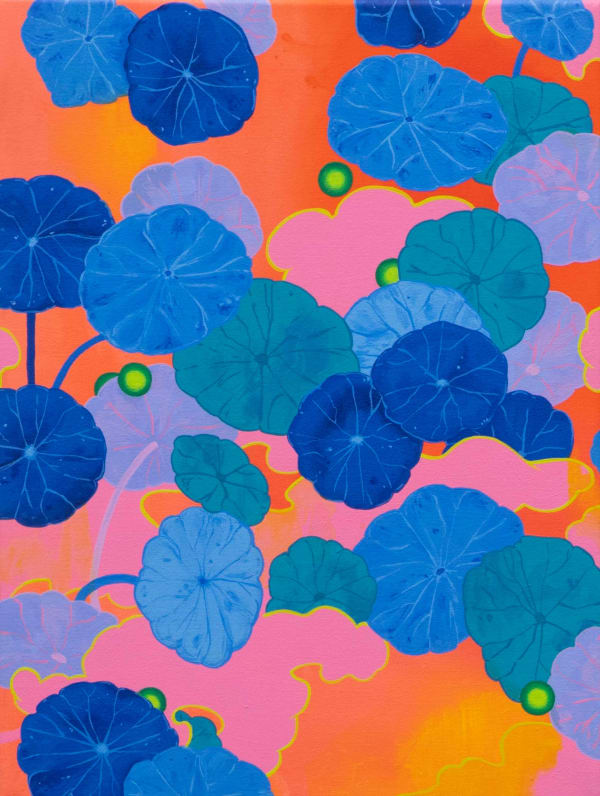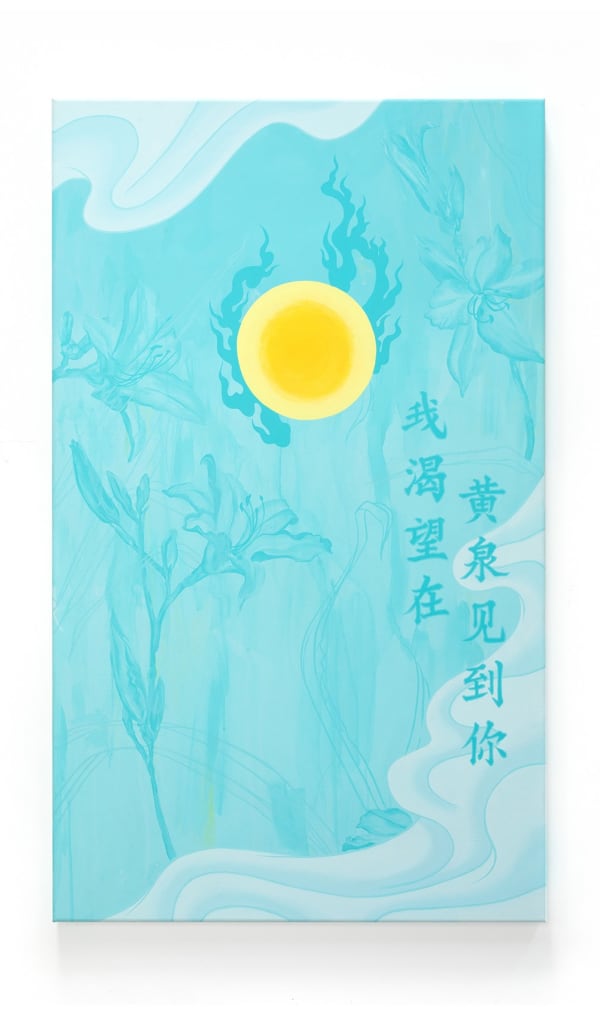-
 Photo by Garry Trinh.
Photo by Garry Trinh. -

-

-
 Louise ZhangIn search of the place between the clouds and mountains, 2023acrylic on canvas152 x 489 cm
Louise ZhangIn search of the place between the clouds and mountains, 2023acrylic on canvas152 x 489 cm -
Moving in Quiet.
By Ava LacoonMoving in Quiet at first feels like a suggestion—preceded by a command, a whisper of warning, and then a cacophony of all three at once. A traversal that repeats itself as we journey onward.
As the earth undergoes its solar passage into the Year of the Wooden Snake, we take our own step through the threshold, greeted by a red wooden frog with its invitation: “welcome.” A nearby red sign reads, “just passing through, do not worry,” referring to Zhang’s sorbet-colored map of Chinese Hell beneath, creating a space for us to sit momentarily between the planes of heaven and hell.
The Year of the Wooden Snake carries a quieter energy. Dusting off the old energy from her earlier works, Louise places them flush against new ones, her practice showing it’s long interest and roots in family, remembrance and honour. Like the act of chucheng - cleaning one’s house, there is constant renewal, a continuous line between life and death—a line that feeds into itself, like an ouroboros.
Like a snake, we must press the skin of our underbellies into the ground, feeling every vibration—as we move through this transitional space. Quiet, and the rejection of perfect understanding is a testament to the power of slowing down; its own form of knowing. Attuning to the energies radiating from her paintings: those who follow this instruction are rewarded with the contemplative intimacy of quietness, granting access to what lies beneath her saccharine colors—a webbing of intrusive thoughts, Chinese mythology, memory, and gore. In the solace of shared quiet, what might reveal itself?
Moving in Quiet. Why must we tread so lightly? What is it in the quiet that we fear? The further we voyage into Zhang’s works—with their recurring depictions of Chinese concepts of hell, afterlife landscapes, and dismembered bodies—the less horrifying these images become. A disquieted comfort arises from Zhang’s playfulness and humor through her use of color, composition, and storytelling. Similarly, we must confront our own internal landscapes—vast and ghostly. Like spirits, we rage silently, as our bodies process pain and grief in nonlinear ways. Perhaps Zhang’s monstrous, ghostly painted forms can be seen as reflections of our asynchronous bodies: clouds enlarged by inflamed, distended abdomens; subdued colors evoking a sickly pallor.
The entry fee of embodiment is uncertainty. Beauty and desire can exist within the fields of death and the threats of bad luck. We complete our journey with a new understanding: there can be rejuvenation in hell and death in heaven. Rather than meeting horror, can we befriend these ghosts and their ghoulish companions? Can we move quietly alongside them—perhaps even share in laughter?
-
 Photo by Zan Wimberley.
Photo by Zan Wimberley.



















